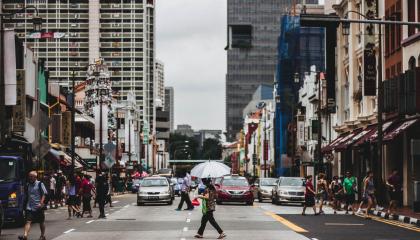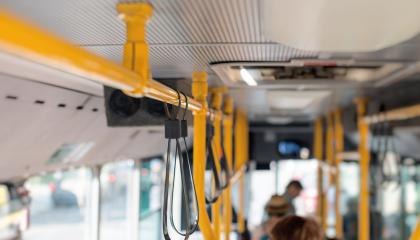It’s generally well accepted that biking is better for the environment since it produces no pollution and consumes no fossil fuels. However, many people choose not to bike, citing safety as a top concern. Bike lanes provide a solution for safety-minded bikers, creating an opportunity for more biking with added safety and specific routes.
A protected bicycle sidewalk is a pathway designated specifically for bikes, usually marked with signs, curbs, or posts to separate the bicycle lane from automobile traffic on the street. Bike-friendly routes create an urban environment that makes biking not only practical but safer too. A protected bicycle lane can cut down on commuter congestion and city pollution.
Private accessible transportation refers to transportation that caters to individuals with impairments. While not necessarily in the public sector, private transportation includes volunteer driver programs, para-transit services, and ride-shares which must comply with the Americans with Disabilities Act (ADA).
Since 1990, pedestrian fatalities have increased, and for pedestrians with disabilities, the risk is even higher. From 2007 to 2017, pedestrian deaths increased by 35%. When researchers studied the cities with the highest fatalities, they came across sidewalks in disrepair, lacking curb ramps, and poorly designed crosswalks.
While we have more work to be done to set up a protective infrastructure for pedestrians, there are a few simple driving techniques that will keep others safe.
Public transportation offers independence to individuals with low vision, providing opportunities for community involvement, job commute, and so much more. While public transportation offers independence, it can be difficult for individuals with low vision to navigate the transportation system. Any public transportation can be complicated to use--from finding the right route, boarding the correct bus, and exiting at the right stop.
Interior home accommodations for individuals with disabilities can create a more welcoming and accessible living experience for friends, family, and visitors who deal with disabilities. Depending on whether or not you have someone who needs the accommodations daily or if you have the occasional visitor with disabilities, these interior home accommodations can make a big difference.
Mainstream transportation infrastructure and public services are predominantly designed for individuals who do not use mobility devices to navigate life. As tech companies connect transportation to apps, the services still target individuals without mobility issues or mobility devices. While this is not a bad thing, cheaper and smarter transportation options should also be factored in for individuals with disabilities.
To create an accessible world and to comply with ADA standards, accessible pedestrian signal (APS) models work with detectable warning tiles to keep pedestrians of all abilities safe around vehicle intersections and street crosswalks. These APS models mark heavily trafficked areas in cities with a button for audio directions for individuals with low visibility. A number of APS tools offer direction and aid to individuals with differing abilities, including a rapid tick sound, speech indication, tactile signals, and vibrating indications.
Interior home accommodations for individuals with disabilities can create a more welcoming and accessible living experience for friends, family, and visitors who deal with disabilities. Depending on whether or not you have someone who needs the accommodations daily or if you have the occasional visitor with disabilities, these interior home accommodations can make a big difference.
Make your home accessible for visitors with impairments by being aware of their needs within your home. This means taking a few steps back and looking at the layout of the space. You might need to make your home temporarily accessible for a family member or friend due to surgery or injury, caring for a loved one, or some other reason.
Whatever your reasons, there are many options for adding accessibility to your home, whether you need long-term accessibility or just for an occasional visit. In this post, we explore how to temporarily make your home accessible to visitors.
Pagination
- Page 1
- Next page
Connect with us
We pride ourselves on our customer service, and we'd love to hear from you! Sign up for our newsletter to keep up with industry updates and trends, as well as any new product releases.












